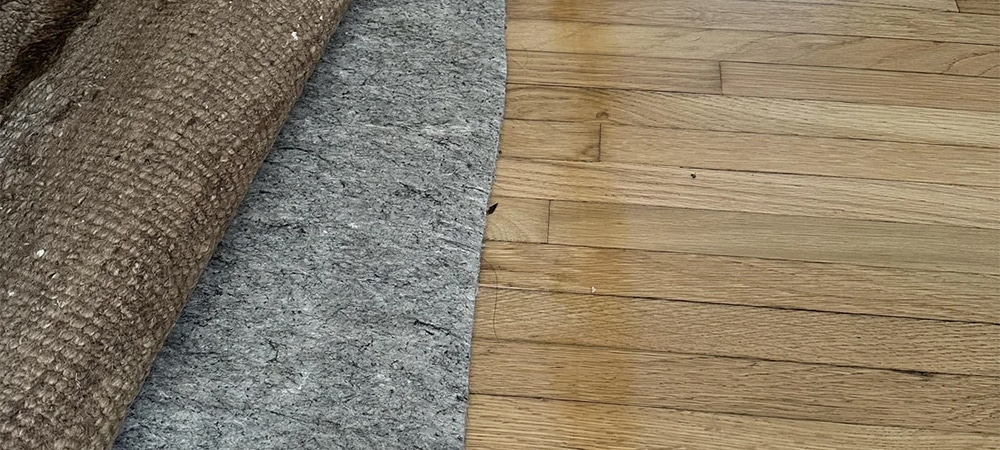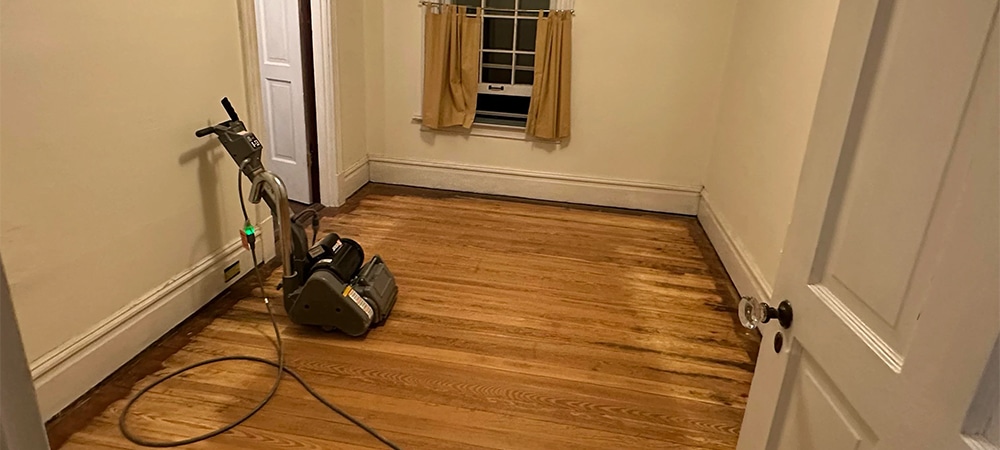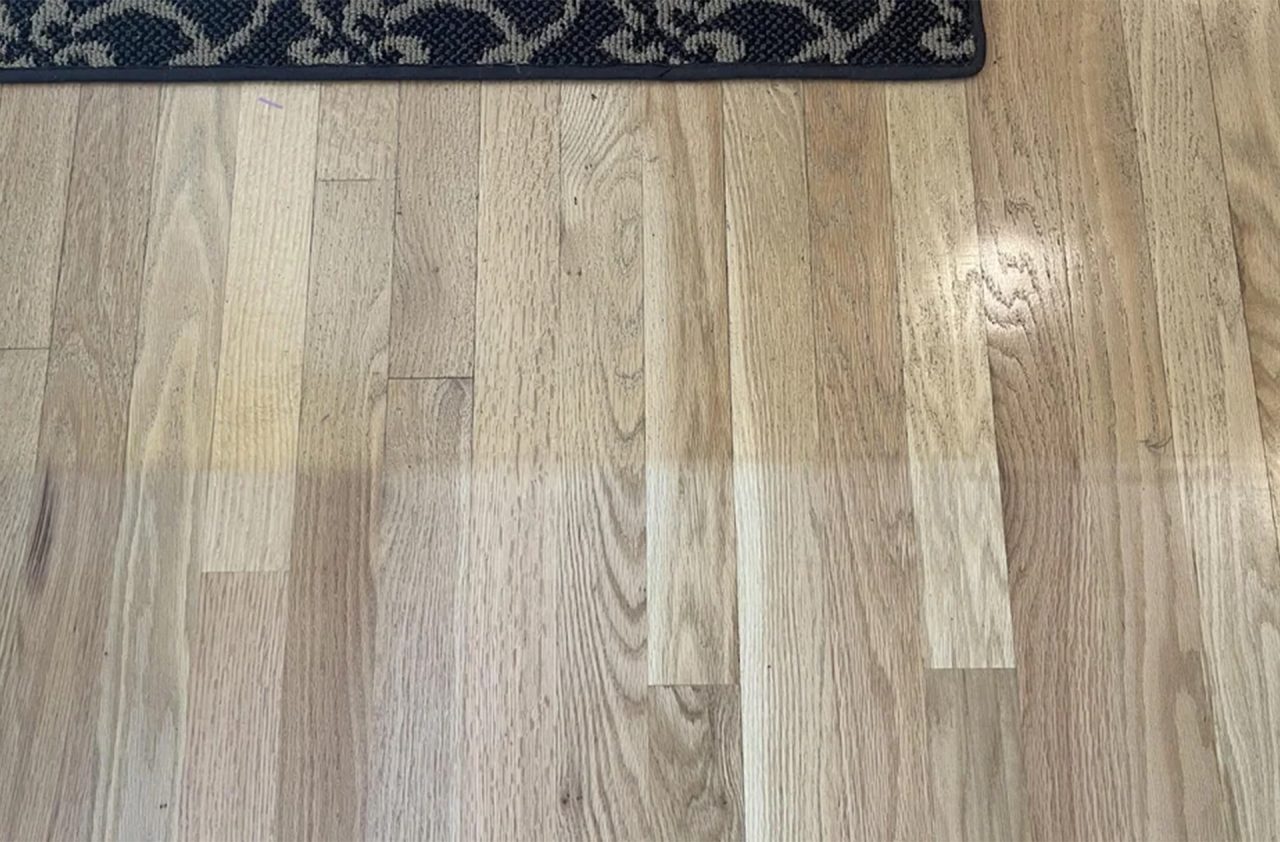You’ve rearranged your living room and moved your trusty area rug to a new spot, and suddenly you notice something unexpected: the hardwood floor underneath the rug is a different colour than the rest of the floor. This can be a jarring discovery, leaving you wondering what caused this unevenness and how to fix it.
Don’t worry, this is a common occurrence with hardwood floors, and it’s usually not a sign of damage. The colour difference is typically due to the protective effect the rug had against sunlight. The exposed parts of your floor have undergone a natural ageing process, while the covered area has retained its original colour.
Related Article: Light Vs. Dark Hardwood Flooring: Choosing the Right Option for Your Home
Sun Exposure and Its Effects
Sunlight is a powerful force that can affect the appearance of many materials, and hardwood floors are no exception. The way light interacts with wood can lead to fascinating transformations over time, creating unique colour variations and a sense of natural character.
How Light Affects Wood
Sunlight contains ultraviolet (UV) rays that can cause a chemical reaction in the wood, leading to a gradual change in its colour. This process is similar to how sunlight can fade fabrics or artwork over time.
Fading vs. Patina
The colour change in hardwood floors due to sunlight can manifest in two main ways:
Fading
Imagine a vibrant painting gradually losing its brilliance under the relentless gaze of the sun. This is similar to what happens with certain wood species when exposed to sunlight. The UV rays can break down the pigments in the wood, causing it to lighten or fade over time. This effect is particularly noticeable in darker woods like cherry or walnut, which may lose their rich hues and become paler with prolonged sun exposure.
Patina
On the other hand, some wood species, like oak, undergo a different transformation in the presence of sunlight. Instead of fading, they develop a richer, warmer patina. This patina is a result of oxidation, a chemical reaction that occurs when the wood’s surface interacts with oxygen and UV rays. The patina adds depth and character to the wood, giving it a beautiful aged look that many homeowners find desirable.
In either case, the area covered by your rug was shielded from this process, resulting in a noticeable colour difference when the rug is moved.

Other Contributing Factors
While sunlight is the primary culprit behind colour variations in hardwood flooring, it’s not the only factor at play. Several other elements can contribute to the unevenness you might observe after moving an area rug, adding complexity to the equation of how your floor ages and changes over time.
Let’s explore some of these often-overlooked factors that can affect the appearance of your hardwood floors.
Wood Type and Finish
Different wood species react differently to sunlight. Some woods are more prone to fading or developing a patina than others. The type of finish applied to your hardwood floor can also influence its reaction to sunlight. Oil-based finishes tend to yellow or amber over time, while water-based finishes are more resistant to colour change.
Rug Placement
The size and placement of your rug will determine the extent of the colour difference. A larger rug that covers a significant portion of the floor will create a more noticeable contrast when moved. The direction your windows face and the amount of direct sunlight the floor receives will also play a role.
Related Article: How to Replace Old Carpeting with Engineered Wood Flooring: A Step-by-Step Guide
Environment
Environmental factors like humidity and temperature can also contribute to colour changes in hardwood flooring. High humidity can cause wood to darken, while dry conditions can lead to fading or cracking.
Restoring Your Floor’s Even Tone
So, you’ve moved your rug and discovered an unwelcome surprise: a noticeable colour difference in your hardwood floor. What can you do to restore its even tone and regain that seamless look?
Natural Blending
In some cases, the colour difference may naturally blend over time as the previously covered area is exposed to sunlight. This process can take several months or even years, depending on the type of wood, the finish, and the amount of sunlight exposure.
Professional Refinishing
If you’re looking for a quicker and more uniform solution, professional refinishing is the way to go. This involves sanding down the entire floor to remove the existing finish and then applying a new stain and finish. Hardwood floor refinishing can restore your floor’s even tone and give it a fresh, new look.
Related Article: How to Restore Hardwood Floors Without Sanding

Preventative Measures
To minimize future colour variations, consider these preventative measures:
- Rotate Area Rugs: Periodically rotate your area rugs to ensure even sunlight exposure across your floor.
- Window Treatments: Use curtains, blinds, or UV-protective window films to control the amount of direct sunlight that reaches your hardwood floor.
- Regular Maintenance: Keep your floors clean and free of debris to prevent scratches and damage that can accelerate colour changes.
The Beauty of Hardwood
Hardwood floors are a natural product, and variations in colour are a part of their inherent beauty. While a sudden colour difference can be surprising, it’s usually not a cause for concern. With time, preventative measures, or professional refinishing, you can restore your floor’s even tone and enjoy its natural elegance for years to come.
If you have any concerns about your hardwood floor or are considering refinishing options, don’t hesitate to contact the experts at LV Flooring. Our flooring professionals can provide expert advice, assess your flooring needs, and offer solutions to help you maintain the beauty and longevity of your investment.


